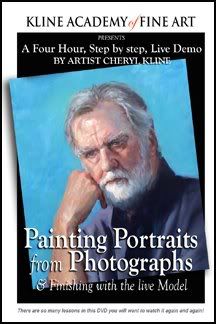How to Paint An Eye part 2
Sometimes, the best way to get your point across is to exaggerate. The image to the right was a demo I did on a student's palette to illustrate how varying values can help to describe the form to give it a more 3 dimensional quality. Let me explain:
1. Think of the eye as a ball. In order to round it out, you need to vary the values from medium dark to light.
2. This example is un-blended. Students tend to over blend everything. Force yourself not to blend. I used a bright Isabey brush for this example because I could get a "chiseled" edge. Overlapping each brush stroke just slightly so my edges would help create the illusion of a transition.
3. When you mix your colors, try to see the how the values vary ever so slightly. My palette was simple: Titanium white, Yellow Ochre, French Vermillion and Black.
4. Later, I could go back in and blend the edges where each value meets or-- I could leave it as is for a different style of painting. In fact, sometimes I have my students work the entire painting without blending. One of my favorite teachers once said to me in her beautiful Italian accent..."think of your painting like a mosaic...and you must describe all the facets of color and value that you see...stroke next to stroke." This has helped me in paintings on a daily basis




